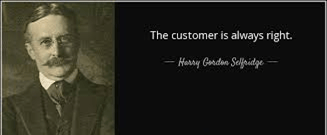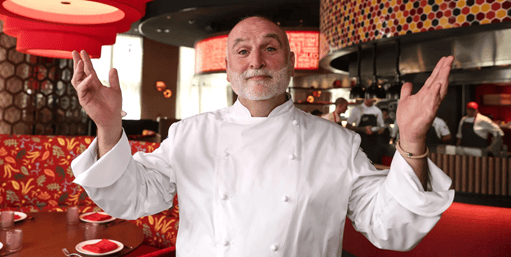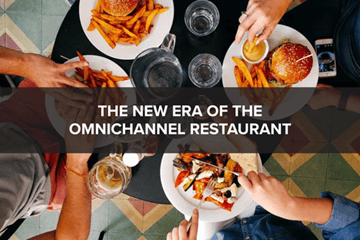Friends of Branded:
Happy Saturday and I hope you had a great week.
When my daughter was applying to kindergarten, there was at least one comment that was made by a member of the admissions department at each of the schools “we meet the child where they’re at.” This seemed like a nice enough and most welcoming comment, and it also resonated or maybe reminded me of the business philosophy “the customer is always right.”
Readers of the H^2 know this “customer is always right” thing is NOT true despite what has become a thoroughly embraced saying. The “customer is always right” philosophy was popularized by Harry Gordon Selfridge, in 1909, and emphasized prioritizing customer satisfaction, even if it means making concessions. This expression was used as a slogan by Mr. Selfridge's London department store, making customer satisfaction its highest priority.
Who had Harry Gordon Selfridge on their bingo card this morning? 😊

For some context, my daughter is currently in the third grade, so my memory of the comment, “we meet the child where they’re at” is still quite fresh in my mind.
On Wednesday this week, I had the privilege of attending Santander’s inaugural Global Consumer & Retail Conference (although the invitation to the dinner that was held the night before the conference must have mysteriously been lost in the mail, but that didn’t bother me at all. Nope, not at all). 😊
There’re more on that event below in the Shoutout section, but the inspiration for this week’s H^2 theme came from a fireside chat at the conference between Sam Bakhshandehpour, CEO, José Andrés Group and Marc Bernstein, Head of Americas ECM Syndicate at Santander.

At its core, the José Andrés Group (“JAG”) is a collection of diverse restaurants and culinary experiences founded on the singular mission to "Change the World Through the Power of Food". But is JAG a restaurant company? Of course, the answer is yes, but that answer would be an incomplete and perfunctory one at best.
JAG is a company that I would describe as an omnichannel hospitality brand, and while they’re not the only one to achieve this position and I dare say status, they may be among the very best and the only one doing so in a most mission-driven and media-integrated way.
Did I just use the word “omnichannel” in connection with a hospitality company?!?
You can bet Chef Jose’s modern take on classic Spanish tapas I did! 😊

José Andrés Group isn’t just a restaurant group, it’s a hospitality ecosystem that spans dining, retail, media, and mission. It’s an omnichannel brand, but one that’s anchored in purpose rather than product alone. It’s hospitality as both experience and expression. When JAG embraces a tech company, for example, it’s purpose needs to feed its ecosystem (How Jose Andres Group is tapping technology to solve a food waste problem).
There’s a lot of restaurants and dining options for consumers to choose from. I’ll go further and say that I don’t think the guest has ever had more options and ways to engage with the food & beverage industry as they do today (and I expect the guest will only have more options tomorrow).

This heightened environment of optionality creates intense competition among operators for guests and that is but only one of the many challenges operators are facing.
A restaurant pays rent 24 hours a day, 7 days a week, 365 days a year (and 366 days in it’s a Leap Year). How many restaurants can rely solely on the business that takes place inside its 4-walls alone? Even adding off-premises dining, is that enough? For many, the answer of course is “yes,” but for many others, the answer is “absolutely not.”
Today’s Top of the Fold isn’t meant to suggest that the bar for all restaurants should be set at being an omnichannel company or that trying to be the next JAG should be on everyone restauranteur’s roadmap. But how are you engaging with your guests? What relationship do you want your guests to have with your brand?
Prior to my going all-in on hospitality, I don’t think I would have looked at restaurants as needing to pursue an omnichannel strategy with such conviction. I’ll go further and admit I didn’t think all that much about the importance of being an omnichannel business. Such a strategy struck me as having the potential of taking on the risk of being unfocused or not embracing one’s limitations.

I would have reserved the word “omnichannel” to describe large companies that provide a seamless, integrated customer experience across multiple channels, both online and offline, so that a customer can interact with the brand however and wherever they prefer without friction or inconsistency (here again, meeting the customer where they’re at).
But embracing an omnichannel strategy isn’t reserved or limited to large companies and I dare say that smaller ones, more agile and integrated ones, have the ability to use its size to its advantage. Omnichannel means that every touchpoint (store, website, mobile app, delivery platform, social media, etc.) “talks” to each other. This is the unification of the customer’s experience, and it means the guest can start in one place and continue in another without disruption.

Applying all this thinking to restaurants almost seems unfair to operators (how many hats can we expect these good people wear?), but as I’ve said often, don’t hate the players, hate the game (if you feel you need to).
Traditionally, a restaurant was a single-channel business and dine-in was the only option. Then came off-premises channels and these include delivery, takeout, catering, drive-thru, and mobile ordering. Now, the next level-up for some restaurants is extending their brands even further, into retail shelves, e-commerce, and CPG (sauces, dressings, coffee, frozen meals, etc.).
An omnichannel restaurant brand seamlessly connects all these experiences, so the guest’s relationship with the brand travels with them from table to supermarket to online cart.
The importance and value here (I hope) are clear. A successful omnichannel increases loyalty and guest retention. Consistency across these channels and experiences builds trust.
You can elect to have a business that allows your guests to leave your brand or one that invites them to simply change channels. This almost seems like the telling of a fairytale of sort, and I can see it now, “once upon a time, restaurants had one lane, dining-in.”

But then things changed, and heroes & legends stepped in and created opportunities for their guests to embrace their brands via takeout, delivery, drive-thru, catering, and mobile ordering. Now, the next frontier is retail, a restaurant’s ability to extend its brand into CPG products without losing its soul.
An omnichannel restaurant doesn’t just serve food in multiple places, it creates a connected ecosystem where the guest’s relationship with the brand travels with them. Regardless of where the guest engages with the brand, it feels the same, tastes the same, and rewards the same.
Like most things (other than oxygen, water, and the importance of respecting the laws of gravity), there isn’t a one size fits all and the pursuit of an omnichannel isn’t for everyone. However, for some (and I’d say for many more than you can imagine), the embracement of at least some form of omnichannel is mission critical and may represent the difference between success and failure.
If you take away only one thing from today’s Top of the Fold, it’s this, the smartest brands are building omnichannel ecosystems that keep guests connected across every touchpoint.
The brands that are winning or the ones that are going to win aren’t just cooking & selling food, they’re building platforms for connection. Operators need to stop thinking in terms of unit count & locations and start thinking about channels. Your restaurant isn’t just a place, it’s a brand platform that can live anywhere your guest eats, shops, scrolls, or streams. Again, meet your guests where they’re at!
Is there a playbook for all of this? Of course there is!
It takes a village.

This image is for you JB. The GOAT!

This week, we’re raising a glass to our friend Brian Anton, who led the Santander Global Consumer & Retail Conference on Wednesday, October 8th in NYC, uniting leaders across the consumer and restaurant landscape for a day of strategy, storytelling, and serious substance.
The restaurant panel (“Flavor Meets Strategy: Driving Growth in the Next Wave of Dining”) stole the show, featuring Tracy Kim (Dig Inn), Etkin Tekin (Haven Hot Chicken), Pedro Silveira (Alife Group), and Rodrigo Barros (BOALI). But we were especially inspired by The Art of Indulgence: Redefining Luxury Dining, with our friend (and past Hospitality Hangout guest!) Sam Bakhshandehpour, CEO of José Andrés Group.
Sam’s take on purpose-driven luxury hit home—especially as JAG continues to prove that indulgence and impact can coexist, most recently through its partnership with Copia (a Branded portfolio company) to fight food insecurity and reduce waste. (Looking at you, Kimberly Smith.)
We love when conversations connect the dots—from Wall Street to Main Street, from luxury dining to local giving—and this event did just that. 👏

FamilyMeal is redefining how restaurants approach catering. Instead of relying on outdated marketplaces and manual processes, FamilyMeal offers a modern platform for building catering menus, managing fulfillment, and turning one-time group orders into consistent, recurring revenue.
Legacy systems are slow, clunky, and costly—charging restaurants commissions as high as 40%. FamilyMeal changes that. It’s the first platform to combine smart ordering, personalized recommendations, and seamless reordering, making the experience easier for guests and more profitable for operators.
With a fair, transparent revenue model, FamilyMeal helps restaurants earn more per order—without the heavy commissions.
Already trusted by Major Food Group, Sweet Chick, Taim, Fish Cheeks, and Black Seed Bagels, FamilyMeal is quickly becoming the go-to platform for modern restaurant catering.
Interested in learning more? Reach out right here.

Shelly Fireman
Don’t just scroll—click! Congratulate everyone on making the B List and send some LinkedIn love their way.


